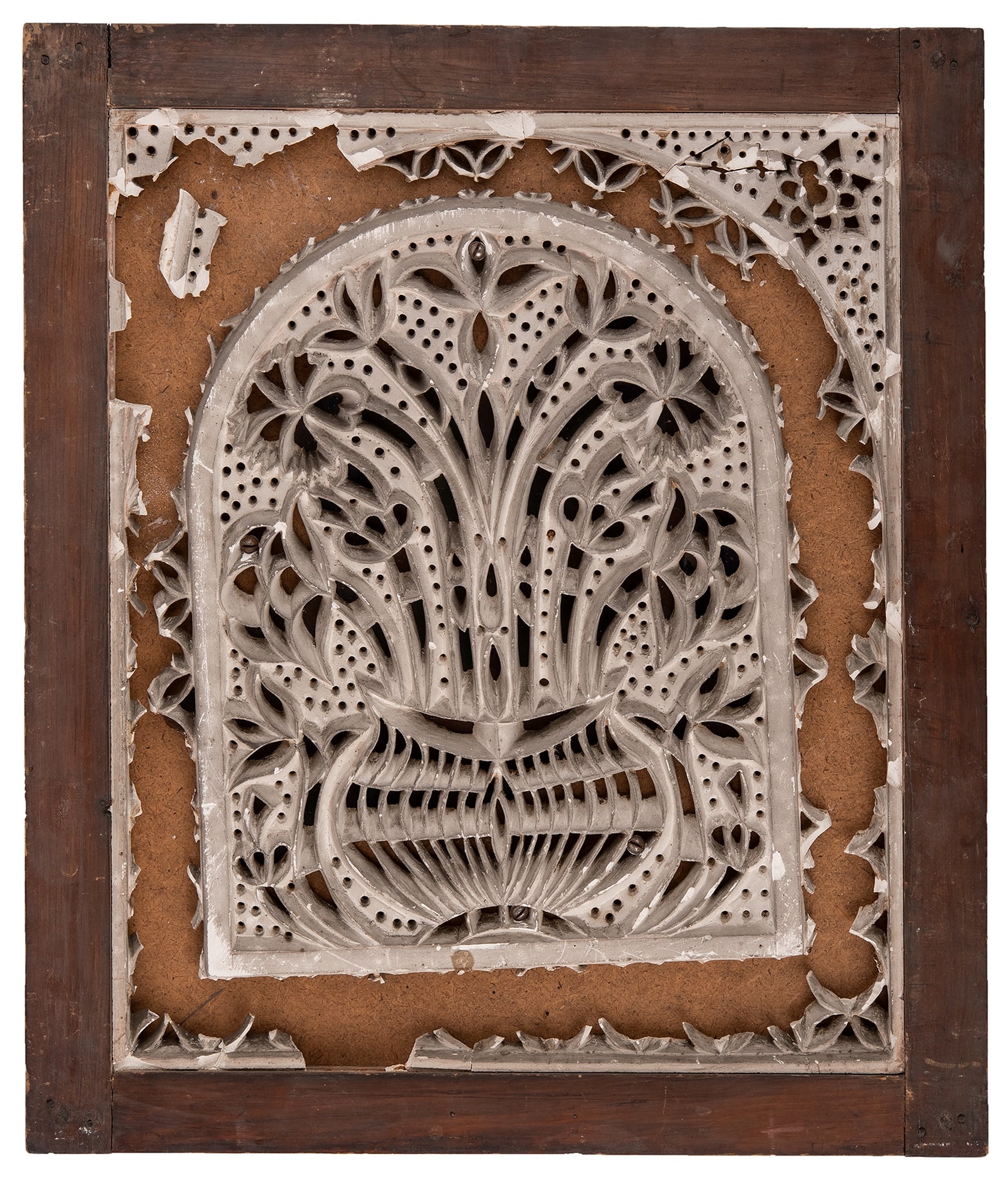This stucco and glass window, with a late version of the flowers in a vase motif, corresponds iconographically and technically to one of the standard types of qamariyya widespread in Egypt during the Ottoman period. Similar windows have survived in several of the collections studied (see for instance IG_7, IG_166, IG_178, IG_356). The representation of flowers in a vase is a widespread motif in Islamic arts. It can also be found in numerous other media, such as ceramics, wood panelling, wall paintings, and textiles, over a long period of time, and in both sacred and profane contexts. Depending on the quality of the design, the type of flower cannot always be identified. Among the most sophisticated examples of stucco and glass windows with the vase motif are those in the apartments of the Crown Prince at the Topkapı Serail (early 17th century CE, date of the windows uncertain) and those in the Sultan’s Lodge (hünkâr kasrı) of the Yeni Cami (1661–1663 CE, date of the windows uncertain), both in Istanbul.
Stucco and glass windows with flowers in a vase also aroused the interest of Western artists and architects, as is attested by a significant number of book illustrations, sketches, and paintings (see for instance IG_43, IG_118, IG_149, IG_153, IG_437, IG_443, IG_461), as well as by the replicas of such windows installed in Arab-style interiors across Europe (IG_54–IG_59, IG_64, IG_431, IG_484–IG_487).
The window discussed here forms part of a two pairs of qamariyyāt acquired by the French industrialist and art collector Émile Étienne Guimet (1836–1918). All four windows became part of the collection of the Musée Guimet, founded in Lyon in 1879, and are today conserved at the Musée des Beaux-Arts (IG_254, IG_255) and the Musée des Confluences (IG_256, IG_257) in Lyon. Despite the poor state of preservation of this qamariyya, the central motif of flowers in a vase is recognizable, not least through comparison with its identical counterpart held at the Musée des Beaux-Arts in Lyon (IG_255).
Unfortunately, there is no information on the place of acquisition, the date, or the provenance of the four windows. Despite its poor state of preservation, the stucco grille does not show any evident signs of weathering, suggesting that the window has never been exposed to the outside environment. We therefore assume that the window has never been part of a historic building in the Islamic World, but was produced specifically for the flourishing art market in the late 19th century and for use in the Arab-style interiors of Western collectors.
Chemical analysis of five pieces of colourless glass from this window as well as the other one preserved at the Musée des Confluences (IG_257) reveal that the glass was made from relatively pure raw materials (soda, lime, silica), corroborating production in the late 19th century.
Mentioned in:
